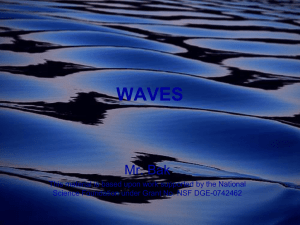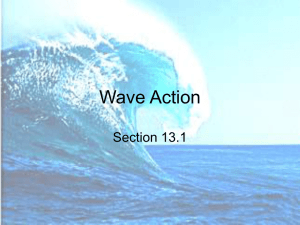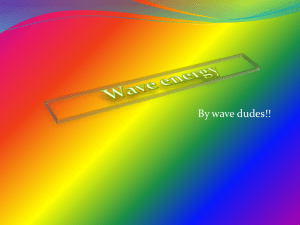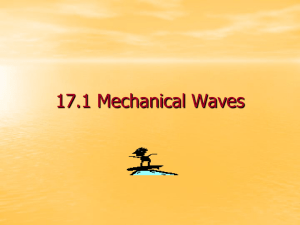Light vs. Sound
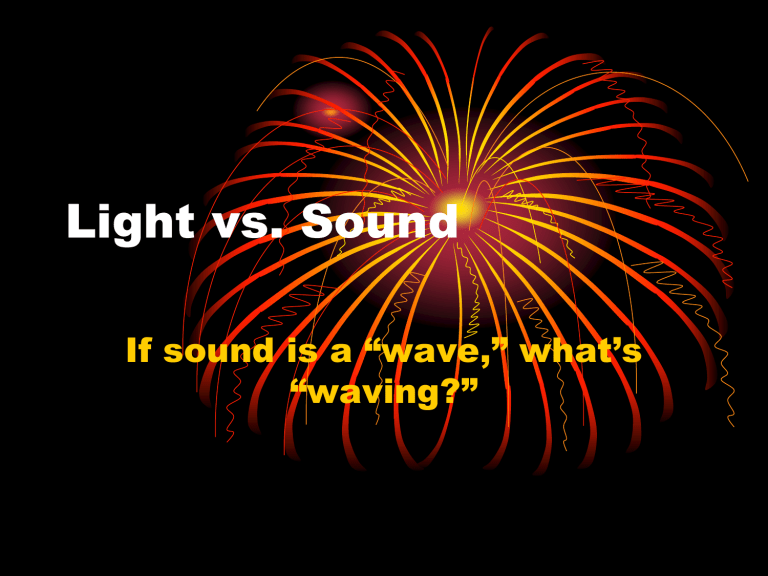
Light vs. Sound
If sound is a “wave,” what’s
“waving?”
Light vs. Sound
• What makes a light wave different from a sound wave?
Light vs. Sound
What makes a light wave different from a sound wave?
• Light travels a lot faster than sound:
Speed of light in air = 300,000,000 meters per second
Speed of sound in air (at 0 Celsius) = 331 meters per second
At room temperature this increases to about 343 m/s.
Light vs. Sound
What makes a light wave different from a sound wave?
• Light can travel in empty space
…Sound can’t because sound is the compression of the medium
• For sound traveling in air, sound wave is made of variations in the pressure of the air
Air Pressure
• Sound Wave = variation in pressure
• Pressure = Force / Area
• Air exerts a force (presses against surfaces)
• Normally air pressure is not very noticeable because it tends to press on all side of a surface evenly
• Air pressure is greatest at sea level
(P = 1 atmosphere, or 1 atm)
Air Pressure: Examples
• Plastic bottle on airplane
• Using a straw
• Vacuum cleaner
• Vacuum Chamber experiments
Sound Wave
• Loud Sound -> Big variation in air pressure
• “Crest” of wave: region of high pressure
• “Trough” of wave:
Region of lower-thanusual pressure
Animation from Physics
Classroom.com: http://www.physicsclassroom.com
Gray = atmospheric pressure
Dark = high pressure
Light = low pressure
Sound Waves Travel As Variations in
Pressure
Transverse vs.
Compression
• Light is a transverse wave:
Transverse means that the wave travels perpendicular to the displacement
• Sound is a compression wave
The wave travels displacement in the same direction as the
• Waves on a slinky?
• “The Wave” in a stadium?
• Waves on a string?
Earthquakes
• What’s the “medium” of an earthquake?
• P-waves are compression waves
• S-waves are transverse waves
• Travel at different speeds
“Seeing” Sound Waves
A microphone converts pressure waves to electrical signals.
An oscilloscope takes an electrical signal as “input” and displays a graph of the signal as a function of time
• Do you think an oscilloscope could be used to measure frequency, wavelength, or both?
The Octave
Octave = 8 notes apart
Going an “octave” higher means doubling the frequency of a note
Going an octave lower means halving the frequency of a note
Octave demo with oscilloscope: http://www.animations.physics.unsw.edu.au/jw/sound-pitch-loudness-timbre.htm
Perception of Sound
Waves
PhET Simulation:
“Sound”
Review
• What determines how fast a wave travels?
• Can you make a wave go faster by putting more energy into the wave?
• What, physically, is sound?
• Give examples of longitudinal waves and transverse waves.



